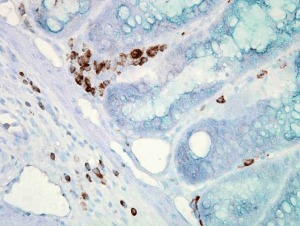HSP70: History
Heat shock proteins (HSPs) were originally described in the early 1960s by the pioneering work of Ferruccio Ritossa on the fruit fly
Drosophila melanogaster 5,6,7. Expression of HSPs was found as being induced after exposure to different kinds of stress such as heat shock and could be demonstrated subsequently in any cellular organism
8. Nevertheless, other stress conditions, including heavy metals, hypoxia, nutrient deprivation and irradiation as well as oxidative and toxic stress, infections and exposure to inflammatory cytokines are also able to induce HSP expression
8, 9. Members of the HSP70 family were identified for the first time as being upregulated in bacteria in response to cellular stress
10. The painstaking analysis of the limited number of proteins firstly identified by heat shock induction in
D. melanogaster and in
E. coli led to the finding that DnaK, DnaJ and GrpE were also members of the heat shock class of proteins. In 1984, Bardwell and Craig demonstrated that the
E. coli DnaK and the Drosophila 70 kDa heat shock proteins were highly conserved at the sequence level
11. Moreover, hybridization between the DNA of the archaebacterium
Methanosarcina barkeri and the
HSP70 genes of
D. melanogaster,
Saccharomyces cerevisiae, and
E. coli has been detected, suggesting the existence of Hsp70-related genes in the three “primary kingdoms”: eukaryotes, eubacteria, and archaebacteria
11.

